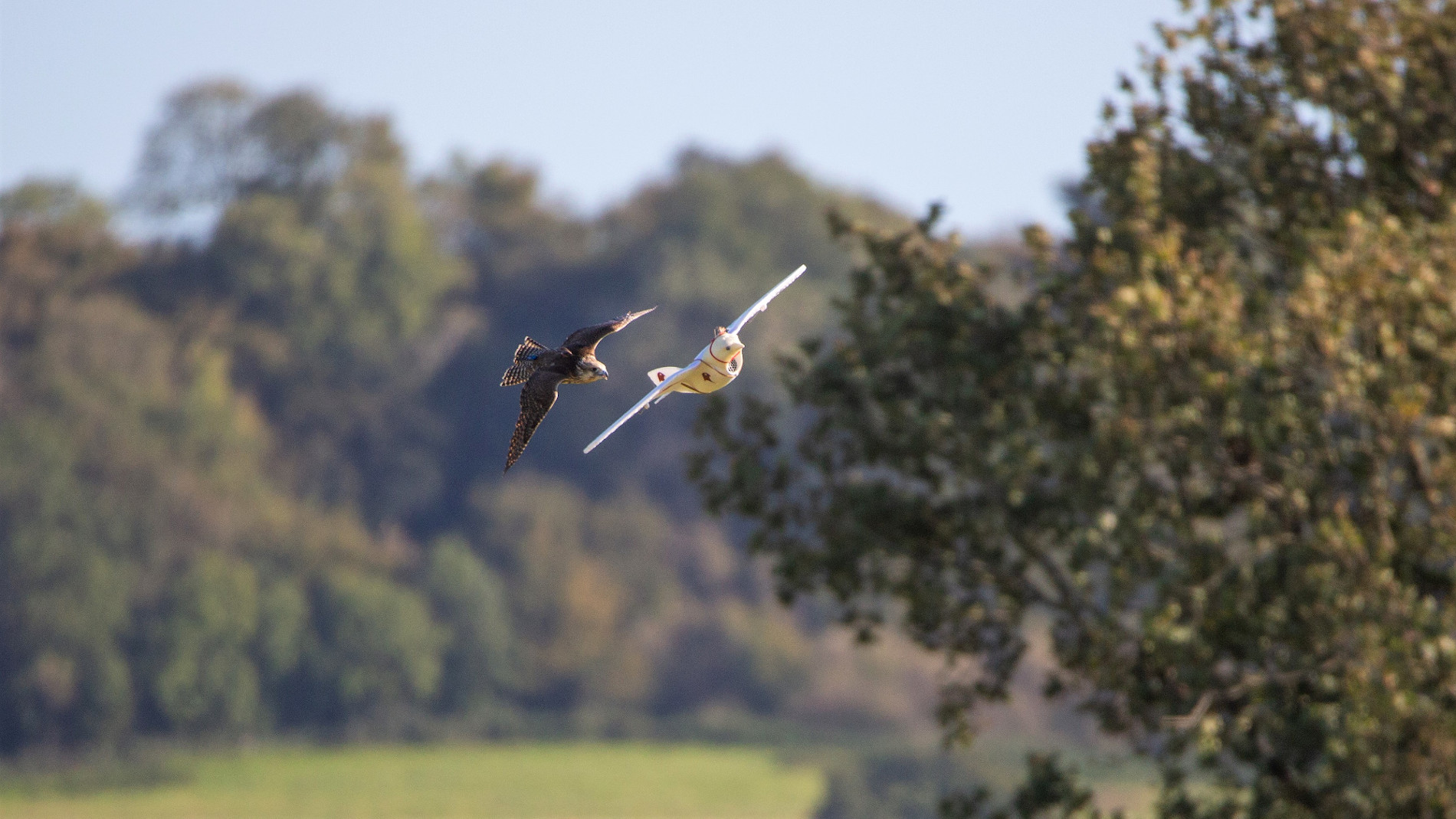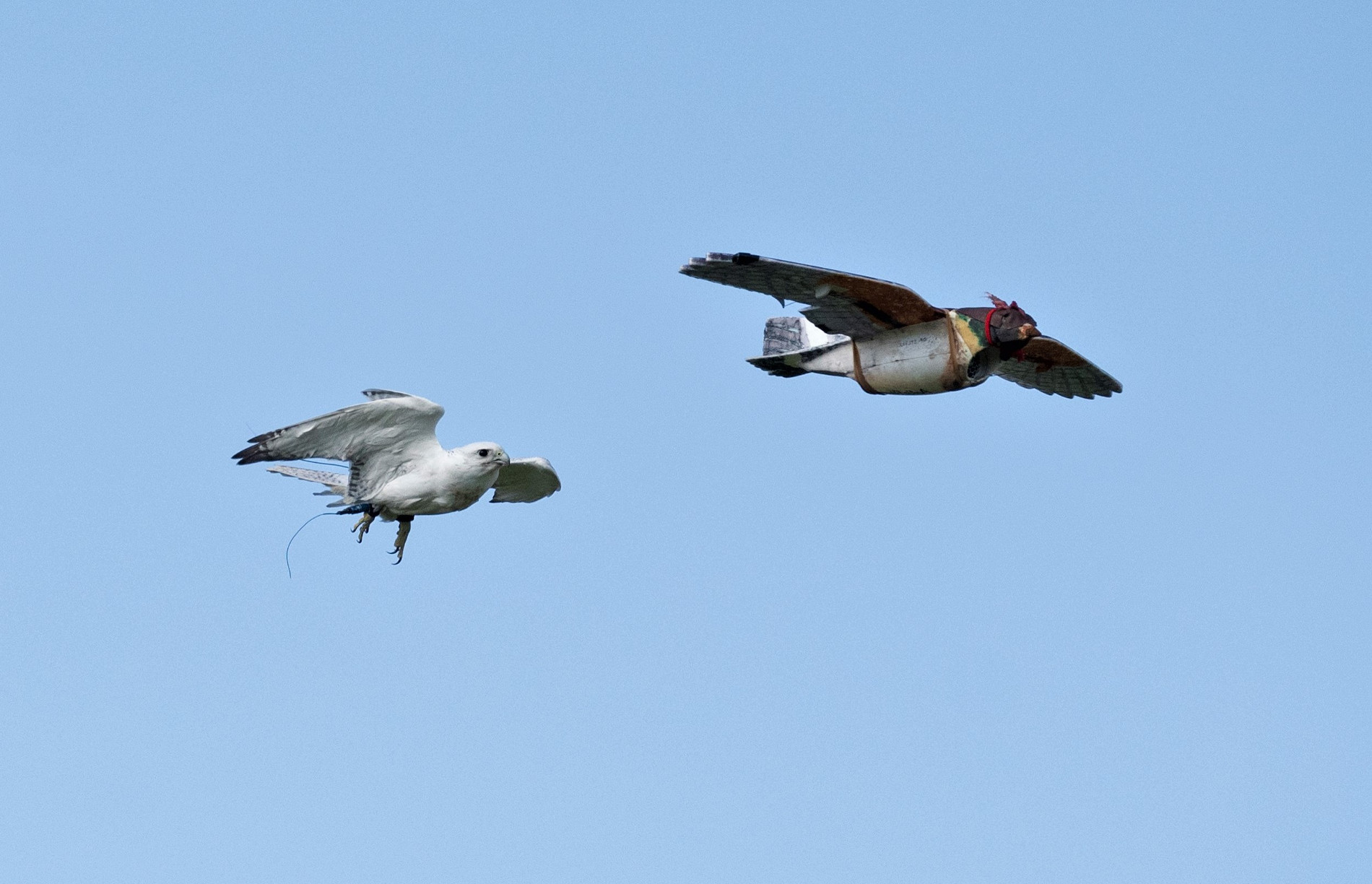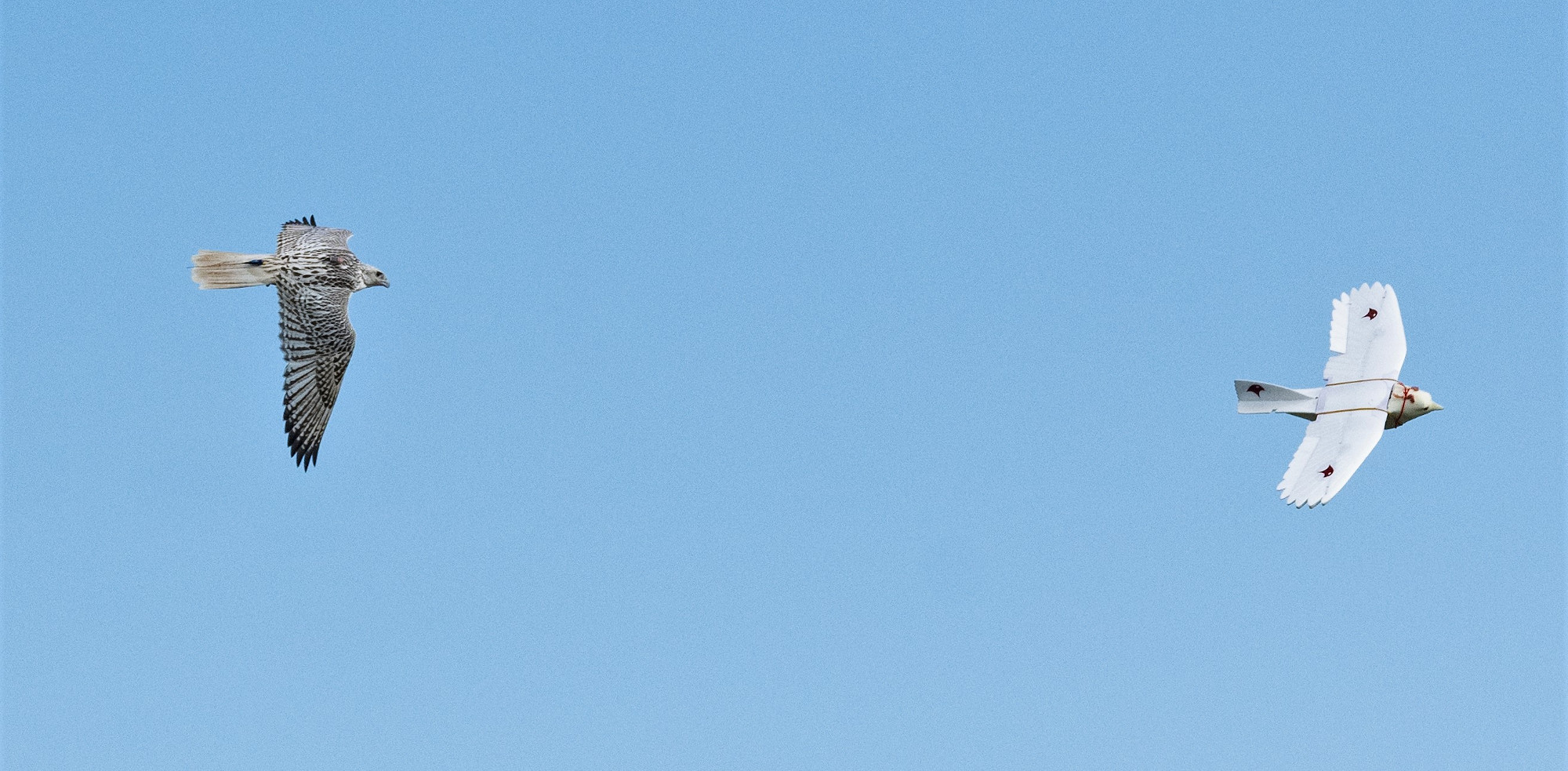Hunt Racing
Understand Hunt Racing and brush up on your knowledge with our video tutorial below.
The Hunt Race is designed to test the hunting skills of pursuit falcons. Many of the contestants are actual hunting birds, and some are young ones learning their flying skills before being taken hunting. The chase relies on robotic prey flown by skilled pilots controlling them from the ground. The prey are specialist designed by Wingbeat Ltd for falcons.
The Falconer and Pilot stand inside the 120 x 120 metre Landing Square facing the wind for a quick take off. On the first horn the Pilot launches the Roprey and the Falconer hoods off his falcon which is carrying an altimeter. The Pilot must tempt the falcon to chase it high into the sky as quickly as possible and the falcon must have an impressive climb rate. When the falcon reaches 120 metres high (400 feet) the second horn is sounded and the Pilot dives immediately closely followed by the falcon in a vertical stoop. As they reach only 50 metres above the ground the third horn is sounded and the Pilot pulls out, putting huge G forces onto the model and the falcon. Both are now close to the ground and the falcon is hot onto her prey. But the Pilot must evade her attacks for thirty seconds without getting caught. If he succeeds, the fourth horn sounds and the falcon must quickly catch her prey in the air and come down inside the Landing Square. As they touch down the fifth horn sounds and the clock is stopped.
The Hunt Race is designed to be a sporting contest. Things can and do go wrong. There is no guarantee that the best falcon will win on the day. She may be clocking a winning time and then, at the last moment, come down outside the Landing Square and incur time penalties.
While Flat Racing tests the speed of the Falcons, Hunt Racing offers different elements.
Hunt Racing:
- Tests the strength and fitness of the Falcon in the climb, its speed in the stoop and the accuracy of its footing of the Roprey. While a skilled Pilot can help the Falcon to demonstrate this, ultimately the competition is designed to measure the ability of the Falcon as a potential hunter rather than the skill of the Pilot.
- Provides an exciting and varied spectacle for viewers so that it is a fun event to watch and attend, thus maximising day attendees and demand for TV or film recording and hence sponsorship.
- Offers an element of uncertainty. This means that the recorded times of finalists can be several seconds apart, rather than milliseconds, and that an ‘outsider’ has a sporting chance of winning.
- Allows flights to be run in about six minutes, or ten per hour. This enables a significant number of competitors to participate in one day. Flat Racing can run up to sixty Falcons in one hour.
- The Hunt Racing area, being limited to about 200×200 metres, with the Landing Square at 120×120 metres, allows clubs to participate even if they do not have access to big open spaces.
- Provides different levels of difficulty so that, for example, breeders can showcase young novice Falcons flying at the beginning of the season for buyers to evaluate them. It also provides tougher levels of competition for more skilled or more powerful Falcons.
- Supports the tradition of real Falconry by having some events that are only open to proven hunting Falcons, and by testing skills that a Falcon needs to be a real hunter. This is to avoid a division between ‘competition’ Falcons and ‘hunting’ Falcons, especially for breeders developing bloodlines.
- In Hunt Racing the Falcon must unhood cleanly and fly without hesitation the moment that the hood is removed. This is what we expect of a hunting Falcon.
- Always take place within about 150 metres of spectators and cameramen. This enables film crews to set up cameras in a predictable way for filming action.
- At larger events, the time clock and the GPS track of the Falcon can be shown live on screen direct from the Timekeeper’s receiver.
- While the body and wings of the Roprey must all conform to the standard factory-made format, the colour or species of the Roprey are optional to allow individual preferences of each Falcon, especially those that hunt. The motor and other parts of the Roprey are optional to encourage progress and development in the performance and reliability of the models. Making an engine more powerful does not necessarily confer an advantage, if the Falcon itself is not powerful. If the Roprey gets too far ahead of the Falcon, the Falcon may be de-motivated and slow down. Also, a more powerful motor could drain the battery more quickly, potentially leaving the Pilot in difficulties at the end of the flight.
- The model Roprey provides a platform for team colours and logos, and for logos from sponsors. These logos will be fully visible in photos and films of the event. This provides an incentive for sponsors to support a Falcon or team.


